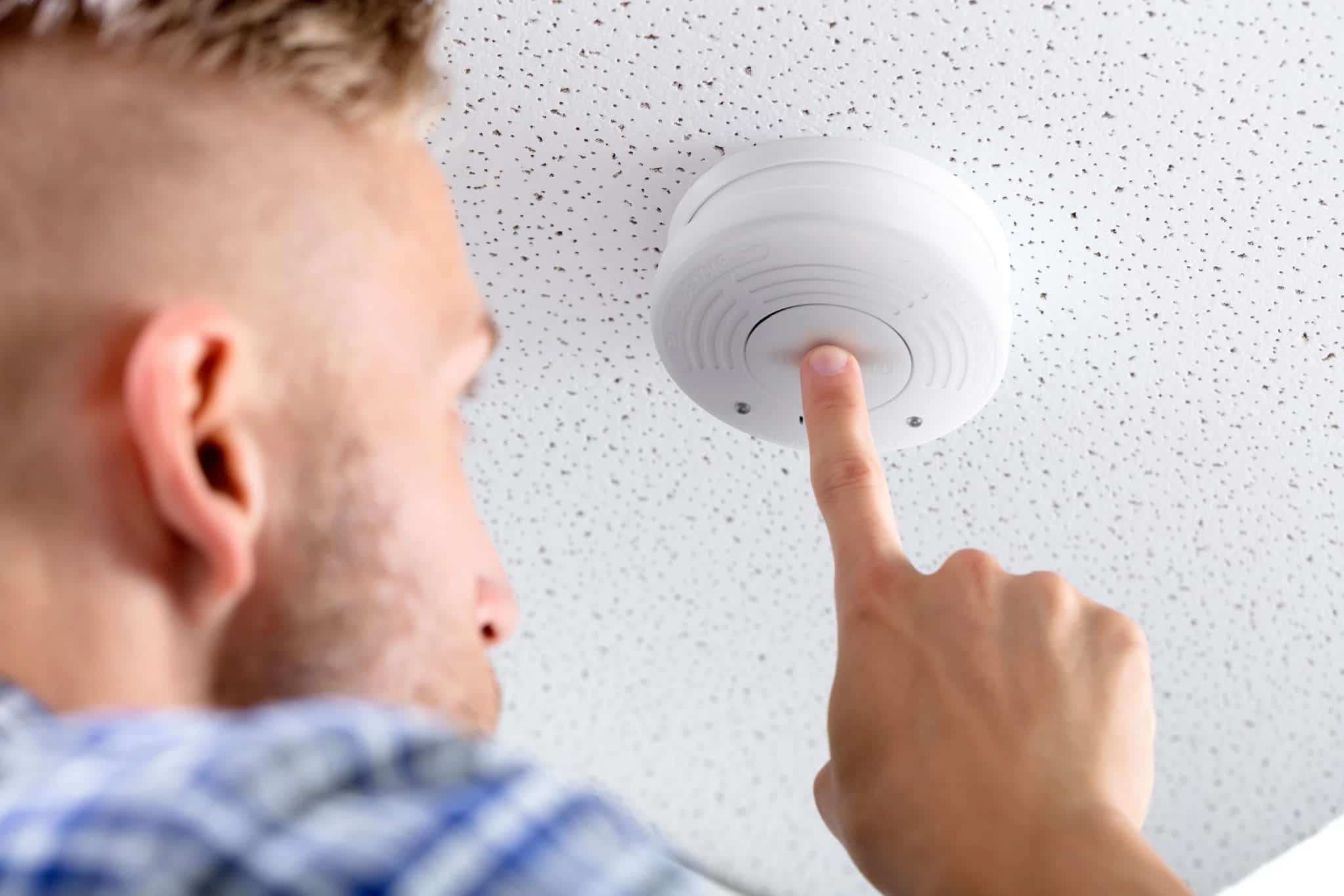How do smoke alarms work? The various types of smoke detectors on the market work in different ways. In this article, we will explain and compare these different types. You can thereafter decide which type of smoke alarm is best for your property.
What are the different types of smoke detectors?
Most smoke alarms on the market are either ionization smoke detectors or photoelectric smoke detectors.
Despite the name, ionization smoke alarms don’t actually detect smoke. You will only hear the alarm sound once the smoke alarm has detected visible flaming fires. Photoelectric smoke detectors, on the other hand, are sensitive to smoke particles in the air. The presence of smoke ensures the alarm is triggered, even if there are no visible flames.
How do smoke alarms work?
An ionization smoke detector works using an ionization chamber and a source of ionizing radiation. Ionization smoke alarms consist of two electrically charged plates, between which is a tiny amount of radioactive material. The radioactive material ionizes the air: it converts air molecules into ions with either a negative charge or a positive charge. The ionized particles, in turn, create a current between the plates and form what is known as an ionization chamber. When smoke enters the chamber it emits alpha particles, interferes with the flow of ions and lessens the flow of current (i.e., electricity). It is this disruption in the flow of electricity that triggers the alarm.
Typically, a photoelectric sensor detects when objects block the light emitted by an LED or laser beam. However, this isn’t practical or sufficiently sensitive for a smoke detector, so this mechanism has been adapted. A photoelectric smoke alarm works by using a photoelectric sensor and a light source. This type of smoke detector has a light sensor at its base. Inside the smoke alarm, an LED light emits a beam of light straight across the chamber; it does not hit the light sensor. When there are smoke particles in the air, they enter the smoke detector and scatter the beam of light. The LED light is deflected in all directions and when some of that LED light hits the light sensor, it triggers the smoke alarm.
Why are these differences significant?
If you consider smoldering fires, photoelectric smoke alarms will detect changes in the surrounding air molecules early on, in as little as three to five minutes in a smoky fire, thereby triggering the alarm. Ionization smoke alarms will only react to visible flames, which often only occur after a house fire has been smoldering for quite some time – as much as a few hours later. The earlier alarm signal emitted from a photoelectric smoke detector means more time for your family to escape a potential or real emergency.
How do smoke alarms work in large homes?
If there is a fire somewhere in your home, it is important that everyone in your home is immediately alerted. To ensure this, all your smoke alarms should be interconnected. Wired smoke detectors are costly and time-consuming to install. However, wireless interconnected photoelectric smoke detectors are incredibly easy to install. In fact, the installation doesn’t require a qualified electrician, so you can install them yourself. (Of course, you can opt to take advantage of a convenient smoke detector installation service by qualified electricians.) These wireless smoke detectors work on radio frequency (RF), and up to 40 smoke detectors can be interconnected on a single network. This means that no matter where your family members are in the home, they will be immediately alerted in the case of an emergency.
How do I know if my smoke detectors are in working condition?
It is always important to regularly check that you have working smoke detectors in every bedroom, in every hallway connected to bedrooms, and at least one smoke detector on every storey that doesn’t have a bedroom. You need to check the batteries or power source: every smoke detector is fitted with a test button for just this purpose. In addition, all smoke detectors should be inspected at least once a year and replaced every 10 years.
It is important to note that all residential properties that are sold or leased in Brisbane and Queensland are required to have interconnected photoelectric smoke detectors installed by 1 January 2022. Click here for further information.
